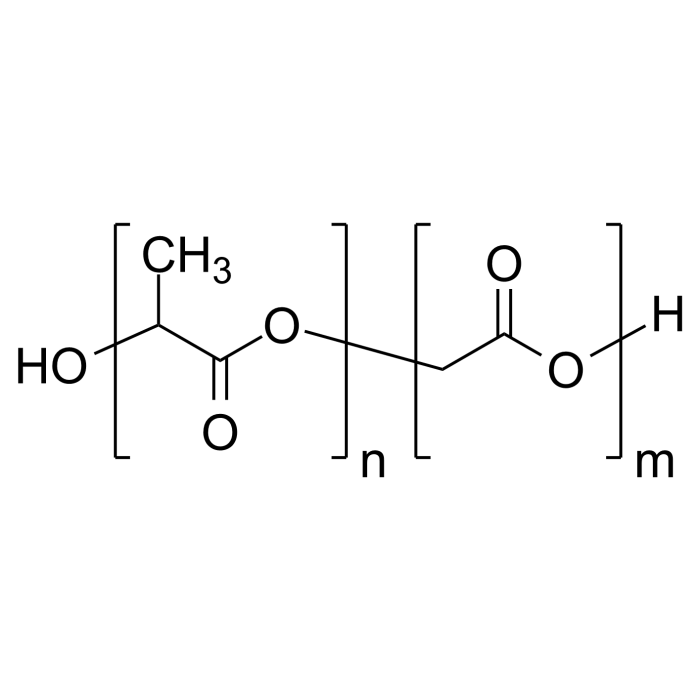|
ポリ(グリコリド-コ-ラクチド) (PGLA) は、グリコリドとラクチドのモノマーからなる生分解性コポリマーです。2 つのモノマーの比率を調整することで、その物理的および化学的特性をカスタマイズできます。グリコリド含有量が多いほど分解が速くなり、ラクチド含有量が多いほど分解が遅くなります。 PGLA は、優れた生体適合性と制御された生分解性により、縫合糸、ドラッグ デリバリー システム、3D 印刷、組織工学などの医療用途で広く使用されています。また、製薬業界では薬物送達システム用の生分解性ポリマー マトリックスとして、食品業界では生分解性包装材料として使用されています。 別名:PLGA、PLG、ポリ(乳酸-コ-グリコール酸) 粘度:~1.8 dL/g [i.v.] 外観:淡黄色から黄褐色個体 論文: - Islam, M.S.; Mitra, S. Synthesis of Microwave Functionalized, Nanostructured Polylactic Co-Glycolic Acid (nfPLGA) for Incorporation into Hydrophobic Dexamethasone to Enhance Dissolution. Nanomaterials 2023, 13, 943. https://doi.org/10.3390/nano13050943
- Serris, I., Serris, P., Frey, K.M. et al. Development of 3D-Printed Layered PLGA Films for Drug Delivery and Evaluation of Drug Release Behaviors. AAPS PharmSciTech 21, 256 (2020). https://doi.org/10.1208/s12249-020-01790-1
- Middleton, John C., and Arthur J. Tipton. 2000. "Synthetic Biodegradable Polymers as Orthopedic Devices.” Biomaterials 21 (23): 2335-46. doi:10.1016/S0142-9612(00)00101-0.
- Grayson, Amy C Richards, Insung S Choi, Betty M Tyler, Paul P Wang, Henry Brem, Michael J Cima, and Robert Langer. 2003. “Multi-Pulse Drug Delivery from a Resorbable Polymeric Microchip Device.” Nature Materials 2 (11). Nature Publishing Group: 767-72. doi:10.1038/nmat998.
- Dawes, G J S, L E Fratila-Apachitei, K Mulia, I Apachitei, G-J Witkamp, and J Duszczyk. 2009. “Size Effect of PLGA Spheres on Drug Loading Efficiency and Release Profiles.” Journal of Materials Science: Materials in Medicine 20 (5). Springer: 1089-94. doi:10.1007/s10856-008-3666-0.
: |


